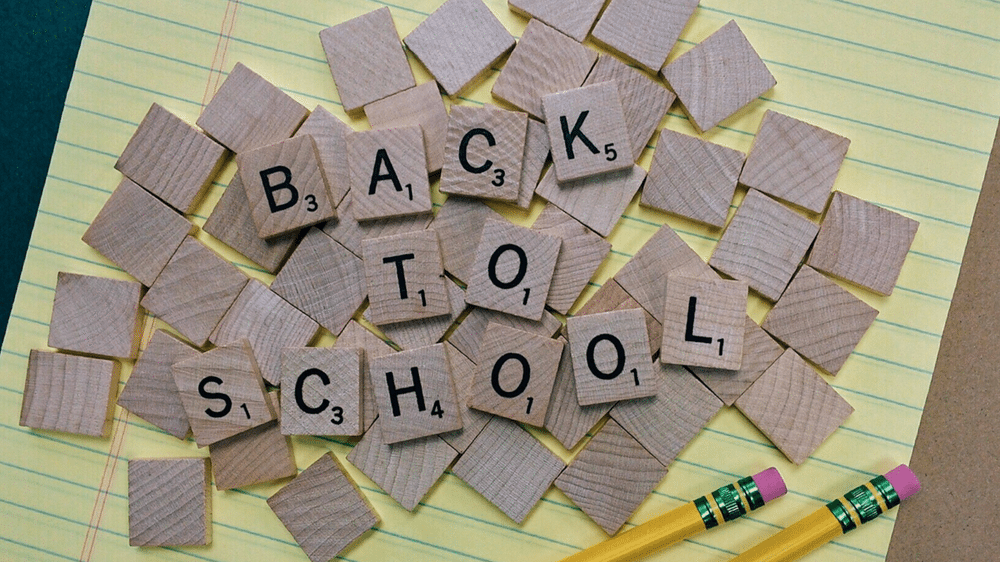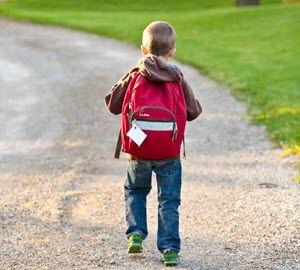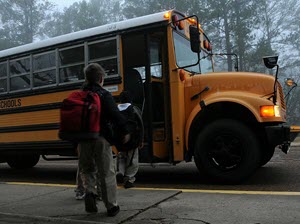
Back to school is fast approaching here in Michigan. This time of year can be both exciting and stressful, especially for children with autism spectrum disorder, ADHD, Down syndrome, or other developmental needs.
Children can have anxiety about new or possibly stressful situations just like adults! Remember how you’ve felt starting a new job or meeting new people. Now multiply that feeling by 100… or 1000, if you struggle with learning, communication and social interactions!
Parents of kids with autism and other special needs know how critical it is to be involved in your child’s education. So you may already be thinking about ways to help your child have a successful start to the new school year. But here are some tips to ease the transition back to school, for you and your child. Not all of these will apply to your child or situation. But there should be a few that will benefit your child’s transition.
Preparing Your Child:

A bit of planning ahead can make a world of difference in how your child acclimates to the new school year.
- Talk about school often with your child. Look at pictures of friends and school activities from the previous year to encourage conversation about school. And if your child has a friend that will be in the same class, arrange a play date before school starts.
- Discuss with your child about when school starts, what grade they are going into, their teacher’s name (if you know it). Just doing this one thing can help reduce their anxiety. Using a calendar to countdown the days is also helpful for visual learners.
- If your child is used to sleeping in during the summer, start to prepare for the school morning schedule by waking them up a bit earlier each day.
- Try to schedule a visit with your child to meet their teacher and see their classroom the week before the first day. Giving your child a visual of their room, locker, or desk can help ease anxieties they may have.
- Get school supplies well in advance so that your child can get used to them. And your child may prefer their familiar backpack, lunch bag, certain colored folders, etc. A familiar item can bring comfort when there is so much newness happening in their world.
- For older students, color code notebooks and materials (including making text book covers) for different classes. Blue equals English, red equals Math, etc. Color coding can help your child identify and keep their materials together more easily.
Preparing the School/Teacher/Therapists:

Your child spends the majority of their awake hours at school. Establishing a collaborative relationship with all those involved in his or her education will make for a smoother school year.
- Ask to schedule a meeting with the teacher before the first day. This will give you a chance to discuss seating, potential distractions and your child’s strengths and needs. Take a copy of your child’s IEP to give the teacher. Review any specific items you want to make sure they are aware of.
- If it’s a new school, contact them to ask for a tour. If permitted, take pictures of the school, playground, classroom, cafeteria, specials rooms and teacher to create a social story for your child.
- Arrange to meet with the principal if your child is new to the school. Being proactive helps everyone to better understand your child’s needs. Also ask about the school’s experience with autism and how the staff works with children on the spectrum.
- Create a one-page profile about your child, outlining their strengths, skills working on, possible sensory issues, dietary restrictions, and favorite reinforcers. Also include a few “fun facts” about your child. Make copies for your child’s teacher, LRC teacher, para pros and therapists. You can also provide one for the principal, assistant principal, office staff, librarian, physical education, art & music teachers. It is very helpful to everyone working with your child to have a “snapshot” of them.
- Hopefully most school teams already do this, but if not, encourage communication among new and previous teachers. Ask them share information on known behavior problems and strategies that worked well. It can also be helpful to share teaching techniques that were beneficial to your child’s learning. If your child has therapists ask them to communicate any helpful information with the new teacher as well.
- Collaborate with the teacher or a behavior specialist to create a reinforcement system. Use this system to reward your child for positive days, especially during the transition back.
- Update your child’s medical information with the school, including any new medications your child is taking. Remember to get any required prescriptions for school therapies from your child’s pediatrician.
- If your child has special dietary needs or has dietary issues, be sure to address (or readdress) these with the school to ensure they will be managed.
Preparing Yourself:

A calm mom and dad are better able to help their child have a smooth back to school transition.
- Confirm who your emergency contacts are and make sure you have their current phone numbers. (Sometimes this is a little more complicated for families that have children with autism or other disabilities.)
- Review your child’s IEP to ensure it is exactly how you want it to be. If the IEP needs updating (maybe due to growth in some areas over the summer), request a meeting with the IEP team to make changes.
- Try to relax – if possible! Children can sense their parents’ anxiety. If you can keep your stress in check, it will help your child stay calm on the first day and through the school year.
We hope you found some helpful back to school tips to create a smooth transition for your child – and you – when that first day arrives!
And if your child struggles in a traditional school setting, needing more focused behavior supports, take a look at Our Programs supporting individuals with autism from ages 2 to 16. We offer both daytime and evening options.
